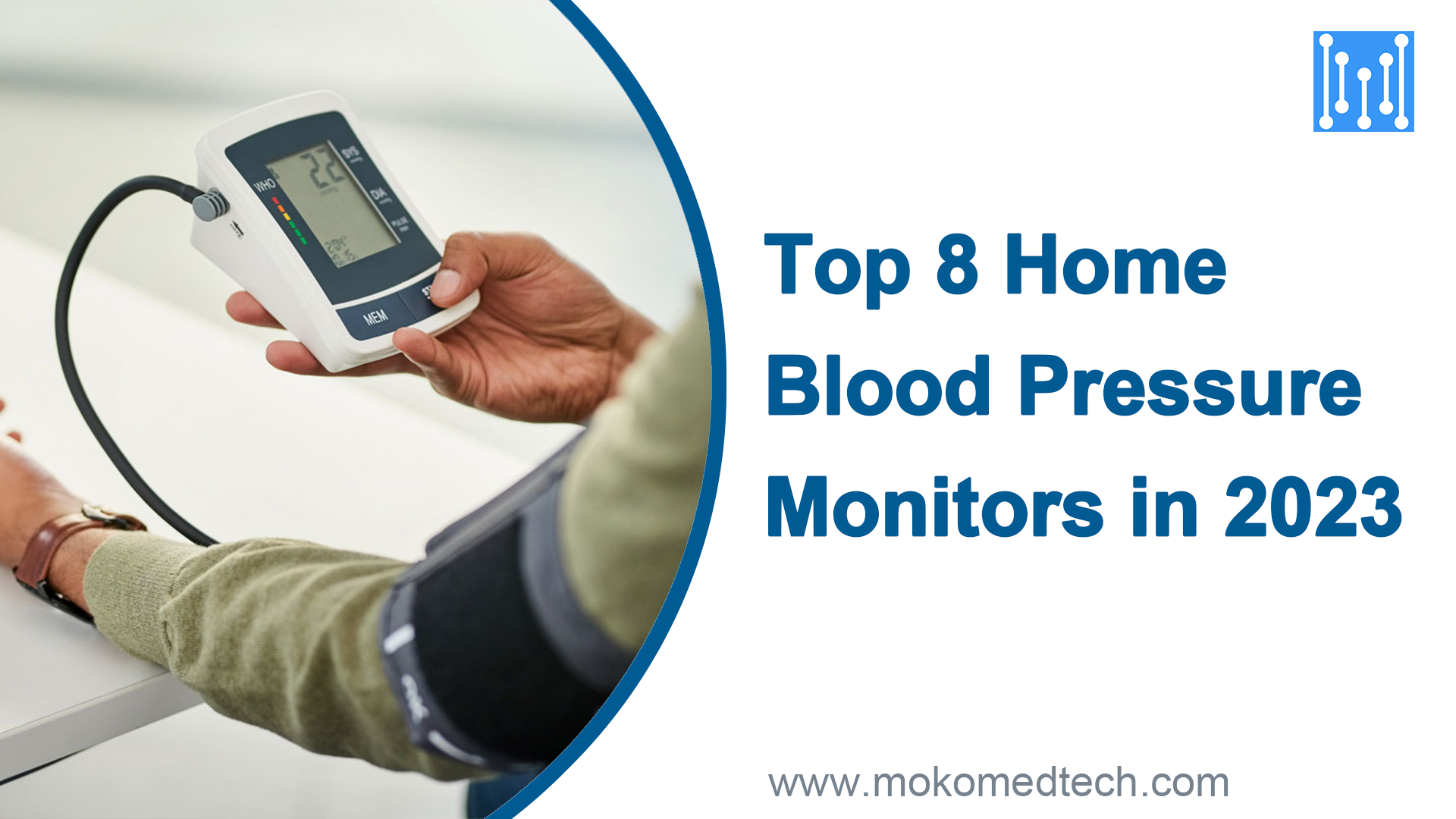Share a quick official approach to get involved in 2023 World Food Safety Day
- Log in the official website, find A Guide to World Food Safety Day 2023.
- Download and read it.
- See the pages about Ways to celebrate.
- Choose your favourite among sport activities, making a video, use leaflet and so on.
- Start your active involvement. (Don’t forget to keep some photo records).
Moko Medtech’s Reading of WHO Leaflet about Food Safety at Home
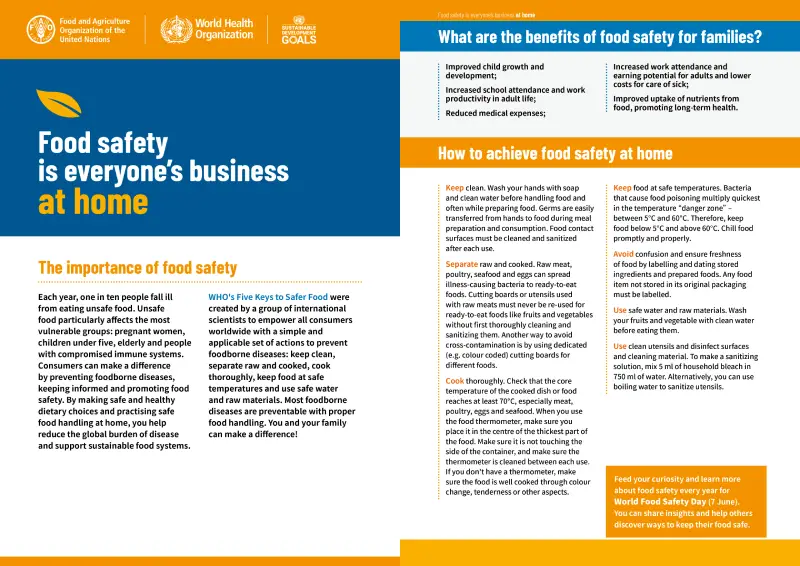
This time, we are going to use Leaflets of FAO-WHO as follows to spread common knowledge of household food safety. In passing, we would review what action we, a food safety device factory, can take to response this social program.
On the leaflet, we can see seven useful tips on how to achieve food safety at home.
Keep Hands Clean
We can agree more to wash hands before preparing food. It is hands that contact food through the whole process. Soap and hand sanitizer are definitely good agents to clean away the dirt and germs on hands. In addition, the way to wash hands is also vital.
A complete hand washing procedure contains seven procedures.
Step 1: Prior to applying hand sanitizer or soap, wet your hands and palms with running water. Then what you need to do is facing palms each other, and rub your fingers together.
Step 2: Clean the hand back and side of finger crevices. Next, rub the palms of the hands along the finger crevices. Repeat the process for the other hand.
Step 3: Wash the finger crevices on the palm side. Then face palms each other, cross them and rub together along the finger crevices.
Step 4: Carefully wash the back of the fingers. Bend the knuckles of each finger to make a half-fist, put the back of the fingers on the palm of the other hand, then rub them. Repeat the process for the other hand.
Step 5: Wash the thumb. Hold the thumb of the other hand, rotate and rub. Do it in the same way for the other hand.
Step 6: Wash the fingertips step by step. Bend the joints of each finger, put the fingertips together in the palm of the other hand. Later, rotate and rub. Then exchange hands.
Step 7: Wash your wrists and arms. Rub your wrists and arms. Do the same thing for the other hand.
Separate Raw and Cooked
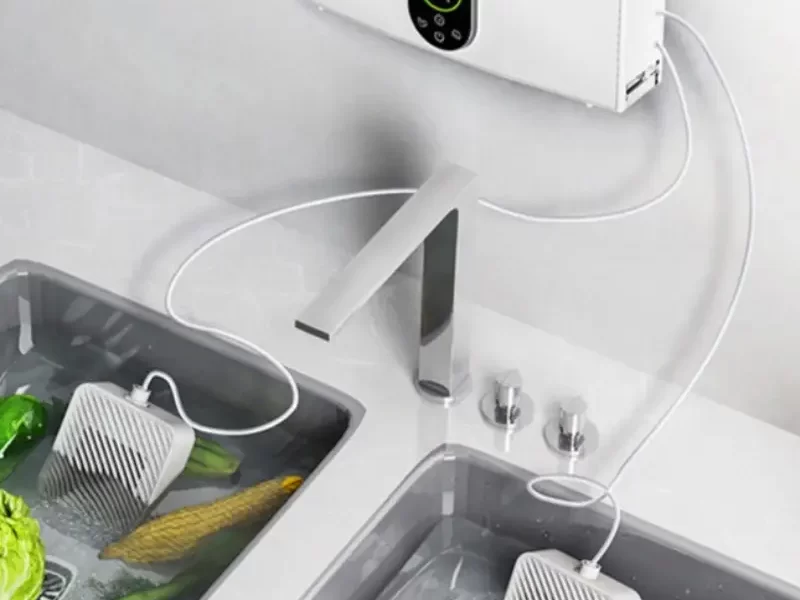
According to the leaflet, we need to separate raw and cooked food by using separated cutting boards and utensils. This reminds me of a food sterilizer with two sanitizer heads. One head is for raw meat sanitizer, the other is for fruit which is ready to eat. The head for raw meat is designed with a deep cleaning function, which fits the property of raw meat. On the contrary, the head for fruit performs soft in cleaning in case of destroying nutrition of fruits. People just need to put the proper the head into the right ware if they want to wash the material.
This is an innovative food safety device that follows the awareness of avoiding cross contamination between raw and the food ready to eat.
Cook thoroughly
We should heat the food until the temperature in the centre of thickness part is up to above 70 degrees.
A high temperature environment, which exceeds the normal growth temperature range of microorganisms, leads to the death of microorganisms. Different microorganisms have different resistance to heat. Fungi and yeast are less resistant to heat. The highest temperature at which fungi can reproduce is about 60°C, while the highest temperature at which yeast can reproduce is about 45°C. Bacteria are moderately heat-resistant. Mesophilic bacteria are 70-90°C, while mesophilic bacteria are 45-55°C. Low-temperature bacteria are 30-35°C. And psychrophilic bacteria are 15-25°C .
Generally speaking, when the food is heated to 70°C, the protein will coagulate and denature. It is an important component of microorganisms such as bacteria, so most pathogenic microorganisms will be killed or inactivated. But if the food is heated insufficiently, it is difficult to guarantee its safety.
Furthermore, we also need to ensure that the temperature of the food center reaches above 70°C. Why? For example, when making fried food, although the temperature of the oil rises to even exceed 200°C, a protective layer is formed on the surface of the fried food quickly. If the heating time is not sufficient and the center temperature of the food does not, in fact, reach the heating temperature. The phenomenon of burnt on the outside and raw on the inside will appear, especially for large pieces of meat and incompletely thawed food.
Keep Food At Safe Temp.
The leaflet suggests that the safe temperature of food is below 5 degrees or above 60 degrees. We have reasoned about 70 degrees just now, so we may look into the issue on why 5 degrees works.
As the leaflet says, bacteria would multiply below 5 degrees. Besides, low temperatures would keep freshness of vegetables and fruits. In low temperature, enzyme performs so inactive that food oxidation slows down. Moreover, it restrains food decomposition.
It is advisable to put a wifi thermometer in the fridge or pantry. If your budget is loose, we highly recommend smart temperature sensor configured by wifi function so as to connect to the internet. That is to say, consumers just put it into the fridge or pantry, the temperature degree is available on the phone at any time and place. This provides convenience and puts your mind at rest against food safety, rather than going upstairs and downstairs to ensure all the food is at right temperature.
Label and Date Stored Food
Food should be labeled and dated if it is not in the original bag. Sometimes we are too confused to identify the freshness of the food. This habit can greatly remind you which food is almost expired. Although it is a little tedious, the effect is really helpful for household food safety management.
What’s should be ignored is that the labels should be waterproof and the ink should be colorfast at least. Otherwise, the water of food will take off what you mark, making your efforts in vain.
Use Safe Water
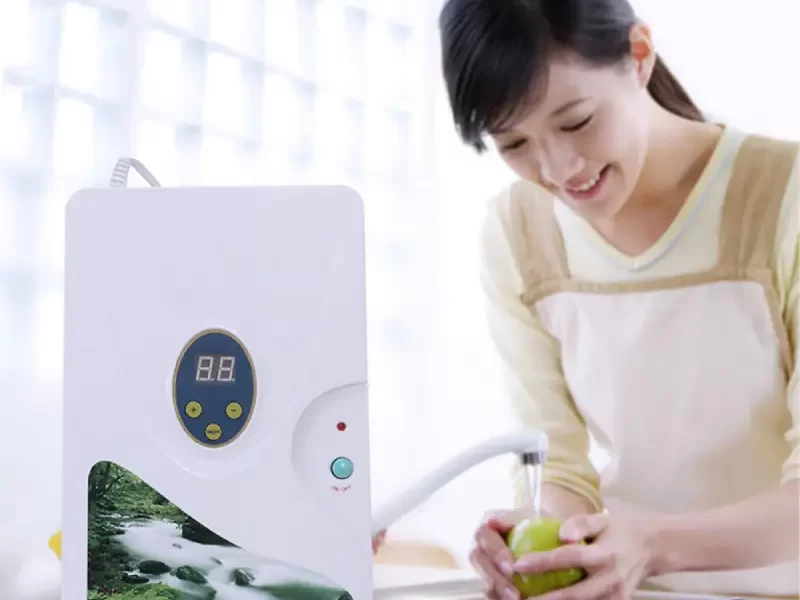
The leaflet also mentions washing and cooking raw food with safe water. That raises other fundamental issues about how to ensure the water is safe. In common, boiling can greatly kill bacteria and viruses in water. And you can also use chemical processes to ensure water purification, like the ozone oxidization method.
Ozone oxidization method refers to the water treatment technology on the basis of ozone. Ozone is a strong oxidant. After dissolving in water, ozone oxidant contamination in two ways. On the one hand, it directly oxidizes inorganic matter and organic matter. On the other hand, it generators a large number of hydroxyl radicals generated in the reaction and new ecological oxygen. Both ways greatly contribute to removing chemical contamination and destroying the organic matter inside virus and germs in the water.
Compared with chlorine disinfection, there are lots of advantages. First, the raw material of ozone disinfection, air, is available with ease anywhere. Without any other auxiliary materials and additives, ozone is versatile at thorough sterilizing and removing odor.
The Ozone oxidization method features high cleanliness and no secondary pollution. The rapid decomposition of ozone into oxygen is a brilliant advantage among other water purification methods.
What’s more, ozone is entirely produced by oxygen in the air. In the disinfection process, the spare oxide ions would combine into oxygen molecules again after about half an hour, going back to the air. In other words, there is no chemical agent residue, which solves the problem of secondary pollution due to the sanitizer itself.
Even though ozone is very useful in water purification, we need to mind something while using it. For example, when we produce ozone delivered into the water, please pay attention to any risk of get electric shock. Due to its oxidizability, it is harmful for the human body when its concentration is up to 15-60mg per cubic metre. When the concentration is 3~30 mg per cubic metre, it would paralyze part of the human body.
Therefore, the suggestion is choosing proper concentration for household water purification. Generally speaking, it is advisable to keep ozone purification at 0.4mh/L for about four minutes. After finishing water sanitizer, you need to wait for a while for attenuation of ozone concentration, which will happen in a quick way. Or, you could use household automatic ozone machine which free your hand away ozone water with timer. It can not only avoid complex manual ozone generator process, but also save you from oxidization effect and the risk of water contamination.
Sanitize Utensils
In addition to hands, which mentioned in the first part, utensils work all the process of cooking in the kitchen. So we should attach the same importance to it as hand washing. Ultraviolet ray is the commonest way to solve this problem.
This disinfection takes the advantage of a proper wavelength light within the range of UV light to destroy the molecular structure of DNA or RNA in microbial cells. This overwhelming leads to the death of growth cell death or regenerative cell, including virus and germs.
However, each coin has two points. UV light is harmful to our eyes and baby skin. There are some tips for safe sanitizer. First, when ultraviolet lamps work, people should leave the area where ultraviolet light can reach them. But don’t worry too much. Generally speaking, body exposure for one or two minutes when turning on and off the light has little effect on human safety. If available, use protective materials to isolate lights and eyes. Second, children with thin skin should avoid entering into the space of ultraviolet disinfection. So look after your babies and set up protective barriers to disinfect the area. It would be better to use a UV light sterilizer with a lightproof shell.
Product Development of Food Safety Device
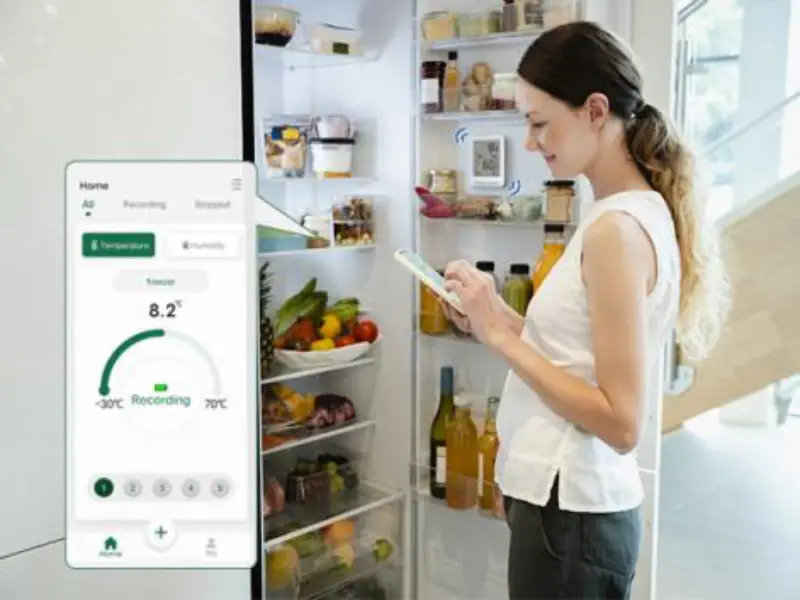
For sustainably improving food safety at home, we think our product development of food safety devices may go towards digitization, smartness and convenience.
Household is the last station before food goes into the stomach, but it is also a weak station without sufficient awareness, knowledge and tools for food security assurance. If the devices are inserted by professional washing model and proper washing procedure, housework about food safety can be undertaken by device in a more professional and smart way, relieving the worries of family lack of food safety common sense. Wifi or bluetooth firmware should be developed to cater convenience management of food safety, adapting device to IoT network.
Conclusion

To sum up, 2023 World Food Safety Day is a good chance to arouse attention to food safety all over the world. Let’s get involved it in your way. Welcome to any idea from another perspective of food safety.
Continue reading as follows



